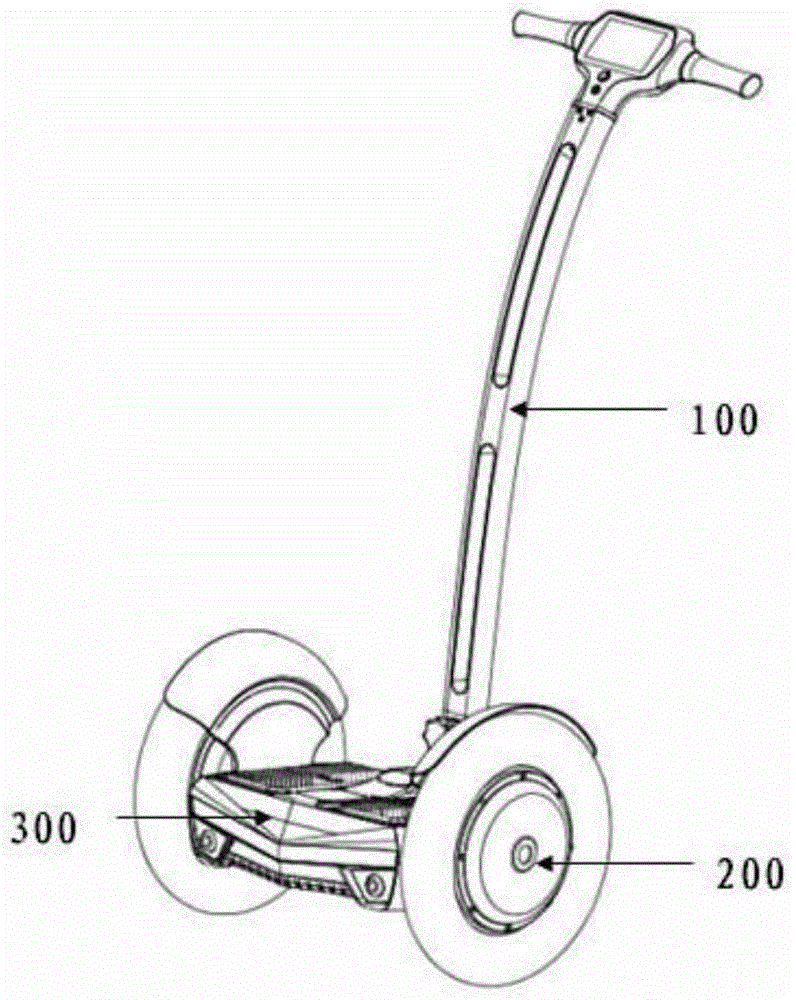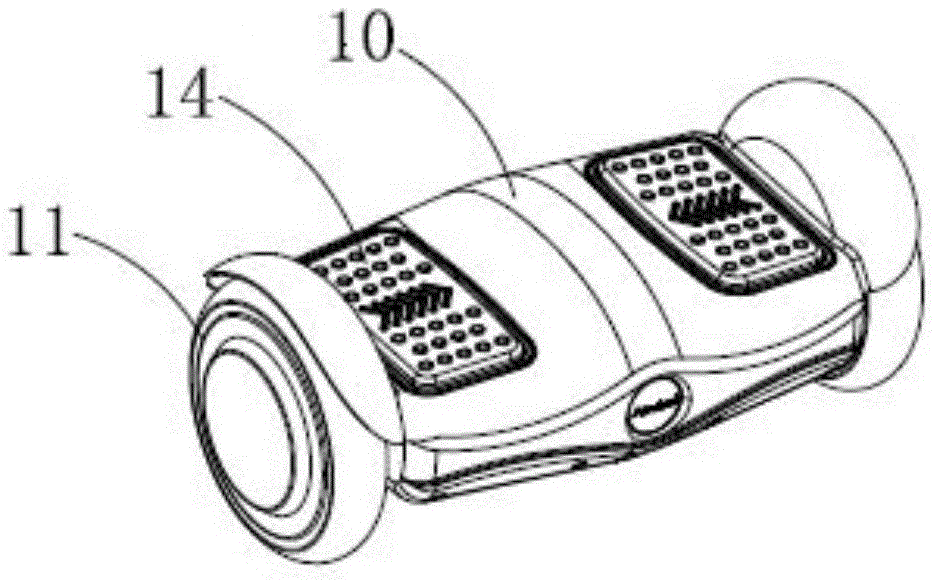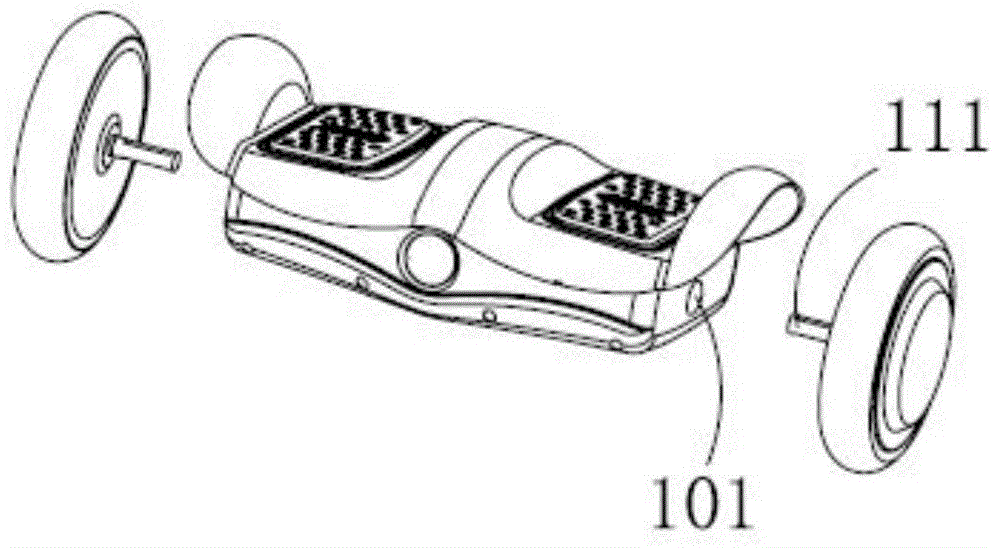Electric vehicle and operation control method thereof
A technology of operation control and electric vehicles, which is applied to motor vehicles, bicycles, two-wheeled bicycles, etc., can solve the problem of high cost and achieve the effect of reducing volume and being easy to carry
- Summary
- Abstract
- Description
- Claims
- Application Information
AI Technical Summary
Problems solved by technology
Method used
Image
Examples
Embodiment 1
[0029] see figure 2 , image 3 as well as Figure 4 As shown, the electric vehicle of the present invention includes a cabin body 10 and two wheels 11 located on both sides of the cabin body; the inside of the cabin body 10 is provided with a control system and a power supply for providing energy to the wheels. The cabin body is provided with a shaft passing hole 101, and the wheel shaft 111 of the wheel 11 passes through the shaft passing hole 101 and is fixedly arranged inside the cabin body 10, and the cabin body 10 is fixedly arranged relative to the wheel shaft 111. To keep the cabin body 10 stable relative to the axle 111 . The electric vehicle also includes a first pedal 12 and a second pedal 13 for the user's feet to step on, that is, when the user stands on the electric vehicle, his feet step on the first pedal 12 and the second pedal 13 respectively. On the second pedal 13. The first pedal 12 is installed on the cabin body through the first rotating shaft arrang...
Embodiment 2
[0043] The difference from Embodiment 1 is that only one extension part 121 is provided, and in order to make the first pedal 12 have better stability, the extension part 121 is arranged at the middle position of the first pedal 12, and It is located below the first pedal 12 and integrally formed with the first pedal 12 . The first rotating shaft 15 is fixedly provided with a first anti-escape member 151, and the first anti-escape member 151 is close to one end of the first rotating shaft 15, and the first rotating shaft 15 is far away from the first anti-escape member 151 After passing through the first through hole 1211 of the extension part 121 and the second through hole 1611 of the protrusion 161 successively, or passing through the second through hole 1611 of the protrusion 161 and the extension After the first through hole 1211 of the part 121, the second anti-escape member 152 is installed on the end of the first rotating shaft 15 away from the first anti-escape member...
Embodiment 3
[0045] The difference between this embodiment and the first embodiment is that the first connection seat 16 is no longer provided, and the protrusion 161 is directly arranged on the bottom surface inside the cabin body 10 or on the side wall inside the cabin body for accommodating the The hollow groove 162 at the other end of the cylindrical rubber member 20 is also directly arranged on the bottom surface inside the cabin body 10, and other settings are the same as in the first embodiment. In this way, there is no need to set up the first connecting seat 16, which simplifies the structure and saves the cost.
PUM
 Login to View More
Login to View More Abstract
Description
Claims
Application Information
 Login to View More
Login to View More - R&D
- Intellectual Property
- Life Sciences
- Materials
- Tech Scout
- Unparalleled Data Quality
- Higher Quality Content
- 60% Fewer Hallucinations
Browse by: Latest US Patents, China's latest patents, Technical Efficacy Thesaurus, Application Domain, Technology Topic, Popular Technical Reports.
© 2025 PatSnap. All rights reserved.Legal|Privacy policy|Modern Slavery Act Transparency Statement|Sitemap|About US| Contact US: help@patsnap.com



